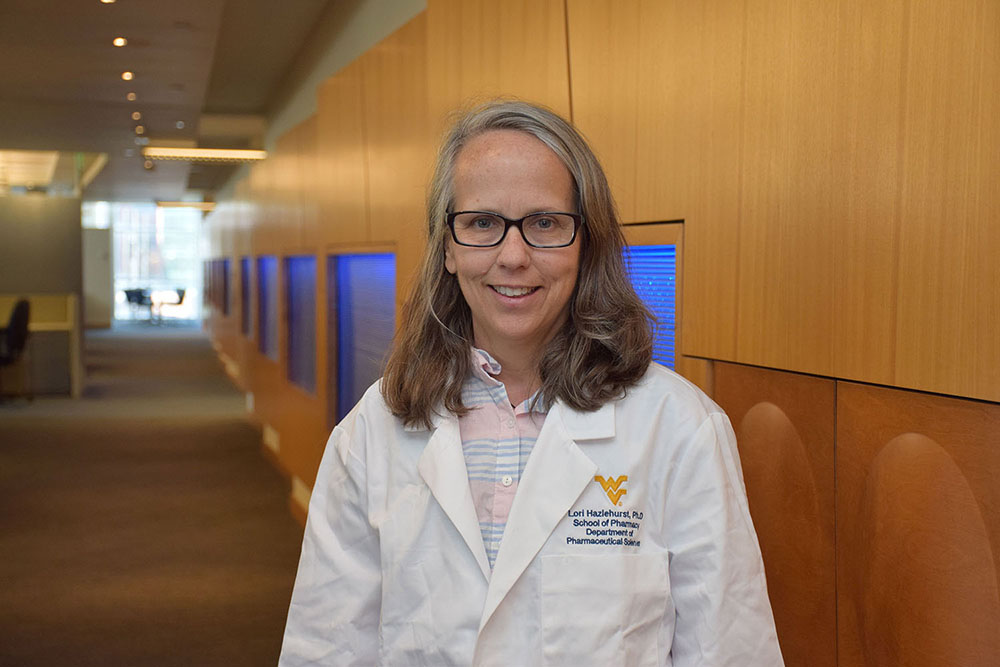
Lori Hazlehurst, Ph.D., is taking the fight against cancer to where it lives: the tumor microenvironment.
Dr. Hazlehurst, a professor in the WVU School of Pharmacy Department of Pharmaceutical Sciences and co-leader of the Alexander B. Osborn Hematopoietic Malignancy and Transplantation Program at the WVU Cancer Institute, specializes in researching hematologic malignancies—cancers that affect the blood and bone marrow, such as myeloma, acute myeloid leukemia (AML), and chronic myeloid leukemia (CML). These cancers originate in the bone marrow where platelets and red and white blood cells are manufactured.
Focusing her research on the tumor microenvironment—the “home” of the cancer cell if you will—is Hazlehurst’s first wave in her plan of attack.
Hematologic malignancies tend to be initially responsive to standard-of-care agents, or the process by which diseases are typically treated; however, in many cases the entire disease is never truly eliminated. There are two theories that potentially explain the resistant nature of cancer cells that remain after treatment. One is that these residual cells may be resistant to treatment from the very beginning. The other is that the cancer is manipulating its microenvironment to form a sort of protective barrier against treatment.
Hazlehurst has had a long-standing interest in examining the tumor microenvironment. More specifically, an interest in the bone marrow microenvironment and its influence on tumor development, progression, and treatment resistance. She and her research team work to identify the specific ways in which the cancer interacts with its microenvironment in order to establish a habitat in which the cancer gains a survival advantage. For instance, cell to cell contact between cancer cells and the normal structural cells in the tumor microenvironment may provide survival signals to the cancer cell. Additionally, the cancer cells often generate soluble factors, such as cytokines and chemokines, that can influence other cells or structures, such as immune cells or blood vessels, within its microenvironment. After a mechanism is identified, Hazlehurst and her team work to determine how they can then utilize their findings to make the standard-of-care agents more effective. One molecule they have currently identified targets the cancer cell’s ability to bind with other cells. By breaking up the interaction of these cells, standard-of care treatments may then become more potent.
The second wave of Hazlehurst’s research plan of attack involves giving the cancer cells the old adage of “too much of a good thing.” In this case, Hazlehurst helps inch cancer cells closer to a cell death pathway known as necroptosis—or inflammatory cell death—by overloading them with calcium. Calcium is required by the cancer cell for cell growth, metastasis, and tissue/bone invasion. However, as tumor cells adapt to those processes, they also become more vulnerable to calcium overload. By overstimulating calcium influx into the cancer cells, they will die.
“With cancer, there are these powerful pathways that promote survival, but they are always on the edge of catastrophe, too,” she said. “Sometimes instead of trying to inhibit cancer cells obtaining something that will allow them to survive, you give it to them and push them over the edge with that process.”
While the fight against cancer has been a long and winding road, Hazlehurst and her team continue to work to identify new strategies and therapeutic approaches for the treatment of hematologic malignancies.
“We want to find ways to improve a patient’s quality of life, and this is what guides us in our work,” she said.
an: 4/17/17